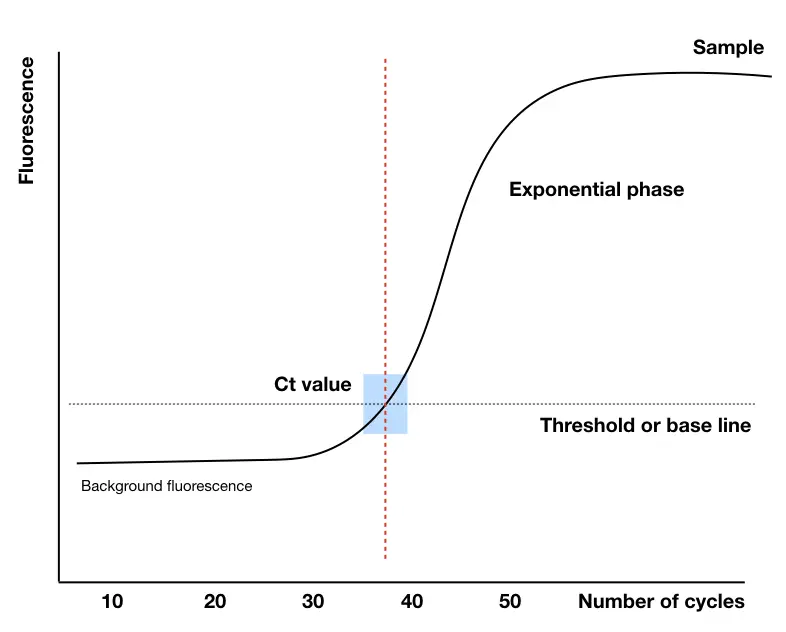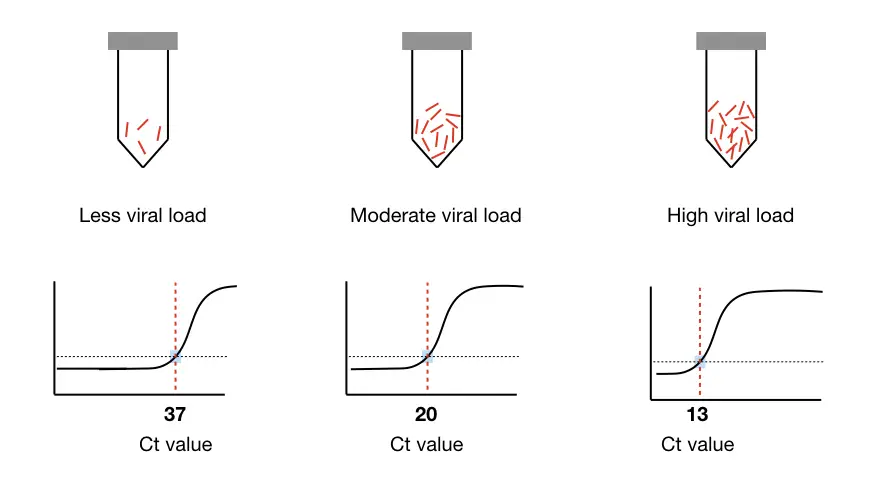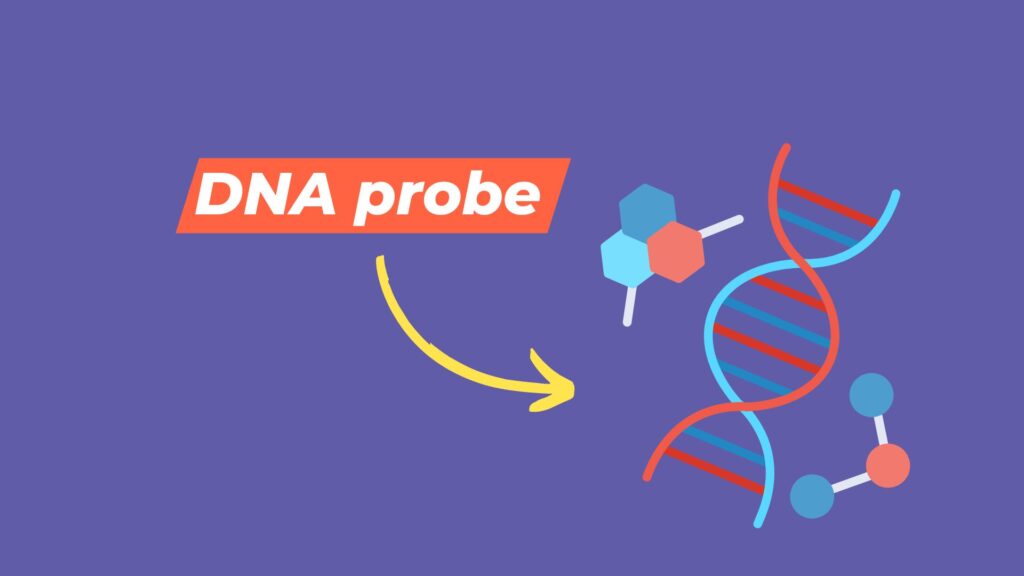“A Higher Ct value indicates a lower viral load whilst the lower Ct value indicates a higher amount of viral load in the sample.”
I went twice for RT-PCR in this recent scenario and tested positive once though no symptoms were reported. However, I have isolated myself for a week, taken medication and retested. I can understand RT-PCR results and Ct value because I know genetics very well.
But let me tell you that people misunderstood results and create chaos in the end, for instance, some people wonder that the Ct value 36 or 37 shows a higher infection, that’s not true. So to make people understand what all these things are, I am writing this article.
RT-PCR and Ct value are now common among people, as these terms are frequently used. Even a non-technical person can now understand the relation of Ct value with the COVID-19, although don’t know the technical aspect behind it.
Ct value is the value obtained during RT-PCR and is a final result indicating the amount of infection or viral load present in a sample. RT-PCR is the gold-standard method for COVID-19 (SARS-CoV-2) detection, quantitatively measures infectivity.
Meaning, we get a definite number of viral particles present in a biological sample. In addition to this, it is the most accurate method available now a day in the marker to screen infection such as COVID-19. Having an accuracy of more than 90%, RT-PCR measures directly the viral nucleic acid, precisely.
The present piece of content focus on the Ct value of SARS-CoV-2; COVID-19, and trying also to explain different Ct values and the severity of the disease with this. Everything, that I will explain in this article are in layman.
For a biology geek or biotech fellow, this technical explanation of threshold value helps them to understand this topic well: Explaining the Ct value of RT-PCR.
Let us start with some basics.
Key Topics:
Introduction to COVID-19 RT-PCR:
To understand the topic well, first, we will have to understand how the RT-PCR works especially for COVID-19. As I said, it’s a gold-standard, trusted and affordable technique for evaluating COVID-19 infection.
Now the question is what it does do?
The RT-PCR measures the viral nucleic acid- RNA present in a sample (by reverse transcribing it in DNA). Expert isolates RNA from a sample and allows it to amplify in the thermocycler. The thermocycler is a machine to perform RT-PCR.
Acronym as Real-time PCR, the RT-PCR quantifies nucleic acid in read-time and that is why it is the trusted technique. The RT-PCR is a real-time Polymerase chain reaction that amplifies the viral nucleic acid.
As the amplification progress, the machine detects every single nucleic acid. If we go a bit technical in this case to amplify the RNA, a short, labeled fluorescent probe is employed to amplify the RNA.
Machine measures emitted fluorescence after amplification, which is the value of our RNA. RNA from every viral particle of the sample is isolated and measured in the same fashion.
The value of fluorescence gives an idea of the template- the RNA (nucleic acid) but it’s not our Ct value or final results. So what is the Ct value and why it is important?
Two genes ORF1 a/b and N gene are used to amplify for RT-PCR assay.
Read further: Novel Coronavirus (COVID-19)- Structure, Genome and Testing.
What is the Ct value of SARS-CoV-2 (COVID-19) RT-PCR?
Ct value; threshold cycle, threshold reaction, reaction threshold, cross point and threshold point is a point in a reaction from where amplification initiates. Meaning, a point from where the fluorescence elevates is our Ct value.

Now let us understand it in layman.
RT-PCR is a cyclic process of denaturation, annealing and expansion; DNA will denature (which is reverse transcribed from the RNA), primer anneals and the template expands.
So if a template nucleic acid is present, the machine amplifies it in a cycle, if not present, the cycle goes blank. Now here is the catch, if 30 cycles go blank- without amplification and nucleic acid amplifies in the 31the cycles, the definite Ct value for that sample is 30.
(That’s the simplest explanation, I am not going too technical.)
Ideally, 35 to 40 cycles are run, so the viral load is less in this case. If amplification occurs in the 15th cycle, meaning the sample possesses a higher viral load.
In the normal case, if no viral particles are present in a sample, no amplification will occur in all 40 cycles, meaning, the sample is of a normal person. This image explains the scenario well.

What is the normal Ct value of SARS-CoV-2 (COVID-19) RT-PCR?
As per the WHO guidelines, 38 to 40 cycles of amplification in RT-PCR should be performed with positive control and negative control. The Ct value between 38 to 40 is considered normal.
This indicates that the sample does not have SARS-CoV-2 viral particle or infection in the sample evaluated. Technically it shows no amplification or very little amplification of template.
What is the Ct value in the case of SARS-CoV-2 (COVID-19) infection?
As per WHO guidelines, cases of infected sample or sample having a positive value of COVID-19 infection is divided into two parts based on the severity of the infection and viral load; high viral load and moderate viral load.
When the Ct value is < 29 is considered as high viral load or presence of SARS-CoV-2 viral particles in the sample.
The Ct value between 30 to 37 is considered as a moderate infection, meaning, moderate to a mild amount of infection.
Higher viral load samples start amplifying from earlier cycles so when the Ct value is 16 showing very high infection compared to Ct value 30.
0 Ct value:
Zero Ct value isn’t practically possible in the RT-PCR assay, it means “no data available” or we can say inappropriate amplification or no amplification. It doesn’t indicate anything related COVID-19 condition.
Related article: Strategies to Prevent Transmission of COVID-19 (Coronavirus)
Ct value and severity of the COVID-19:
If you have very mild symptoms of COVID-19 and a Ct value of 39 (meaning technically you are non-infected), it doesn’t mean you do not need treatment. The progression and severity of the disease depend on many factors.
A retrospective study conducted by Sweta S & Singhal T et al. shows some shocking data. Ct values between 11-20, 21-30 and 31-40 were three broad categories of patients used to evaluate the severity of the disease and death rate of patients in this study.
They have reported a higher disease severity of 31% in the category of Ct value 11-20, however, 22% of patients between the Ct value of 31-40 were severely infected as well.
The mortality rate of 44%, 40% and 16% were reported in the categories Ct 31-40, 21-30 and 11-20, respectively.
This study shows that the severity of the disease COVID-19 and mortality rate is independent of the Ct value of RT-PCR. Henceforth, if your report shows a lower Ct value, the swab may have an infection, you may later develop severe symptoms if not given accurate treatment.
Another study conducted by Sebastian S.G et al. shows that the Ct value isn’t enough to rule out the infection severity. Although RT-PCR is one of the most sensitive and versatile techniques, there are chances of false-positive and false-negative results.
There is no direct correlation between the Ct value of COVID-19 (SARS-CoV-2) RT-PCR and the severity of the disease. Meaning, it shows the quantity of infection present in the sample, but not how the body reacts!
As shown above, it may possible that having a lower Ct value in a person doesn’t show any signs or symptoms and vice versa. A medical professional can’t rely only on the results of Ct value to treat a patient. Clinical indications are also an important factor for treatment, the dosage of the drug and any other medical activity.
The Ct value shows only the infectivity but not the severity. Nasal or throat swab RT-PCR shows whether or not the penetrance of SARS-CoV, though if it spread to the lung, it can’t be detected by the testing.
Sometimes the swab may have negative RT-PCR results, but the virus penetrates to the lung. And is a serious condition. A Chest CT scan is advisable predominantly, that’s why!
“Ct value doesn’t correlate with the disease severity but with the infectivity only”
Now you may wonder if it is so, then why the RT-PCR Ct value is so important?
Importance of RT-PCR in COVID-19 testing:
There are many advantages as well as disadvantages of RT-PCR for testing COVID-19 samples. For example, a techie expert can perform it easily, ready to use kits are there.
The majority of processes are semi-automated and precise to perform.
The testing accuracy is between 88% to 93%.
The process is faster and can perform hundreds of samples at once.
The technique is relatively safe and cost-effective.
These are the reasons why the RT-PCR test is often employed for COVID-19 testing.
Ct value and asymptomatic COVID-19 patient:
Asymptomatic means do not have any signs or symptoms of the disease for a longer period. Asymptomatic patients are found commonly in many COVID-19 cases, in which having a higher infection doesn’t harm the person in any way. However, it may transmit to another person.
Practically speaking, the Ct-value data of the RT-PCR doesn’t sufficient to show an asymptomatic state, nonetheless, values near ~24 are considered asymptomatic, if a person doesn’t have any symptoms.
Interestingly, cases have been reported with the Ct value lower than 20 and are asymptomatic too. The threshold cycle value doesn’t show the symptomatic or asymptomatic state of the patient.
Standard Ct values:
FDA says that the Ct value lower than ~36 or less (37 for FAM dye and 35 for VIC/HEX dye, don’t worry about those technical things!) of a sample is considered as positive for COVID-19, and if a sigmoidal amplification curve observe. Notedly, if samples don’t show a sigmoidal graph and Ct values more than ~36 are effectively said to be negative for SARS-CoV-2.
FDA also implemented another condition to examine the results; are controls. The positive and negative controls employed, do have exact respective values. If are not appropriate, results can’t be considered or retesting is advised.
The table below explains how results are counted.
| Example | FAM dye observation | VIC/HEX dye observation | Results |
| Case 1 | Sigmoidal amplification curve & Ct value < 35 | Sigmoidal amplification curve & Ct value < 37 | Positive for COVID-19 |
| Case 2 | Sigmoidal amplification curve & Ct value < 35 | No sigmoidal amplification curve & Ct value > 37 | Negative for COVID-19 |
| Case 3 | No Ct value and/or no sigmoidal amplification curve & Ct value >35 | Sigmoidal amplification curve & Ct value < 37 | Invalid results; retesting |
| Case 4 | No Ct value and/or no sigmoidal amplification curve & Ct value >35 | No sigmoidal amplification curve & Ct value > 37 | Invalid results; retesting |
As per the ICMR (Indian Council of Medical Research), Consider the sample as positive for COVID-19 below the Ct value of 35. Meaning, no asymptomatic condition can be shown in the report even if the person is normal. However, ICMR has given an elaborative explanation of how results are considered.
Read more: Coronavirus HKU1 (HCoV-HKU1)-HKU1-PCR.
Wrapping up:
RT-PCR is an essential testing method for COVID-19, for example, one needs an RT-PCR report to migrate or travel internationally. So it is also crucial to understand some technical things related, though are hard!
Ct value is one of the factors which is taken into account for screening, treating and managing COVID-19 patients. A patient can be said negative for COVID-19 only when their RT-PCR test is negative, meaning, a Ct value around 35 or more.
Take responsibility, wear a mask and obey social distancing to counter COVID-19. Together we can fight against coronavirus. If you like this article, please share it.
Resources:
Shah S, Singhal T, Davar N, Thakkar P. No correlation between Ct values and severity of disease or mortality in patients with COVID 19 disease. Indian J Med Microbiol. 2021;39(1):116-117. doi:10.1016/j.ijmmb.2020.10.021
Sebastian, Gomez R & Mingorance J et al. Ct value is not enough to discriminate patients harboring the infective virus. Journal of infection. 2020;82(3): E35-E37.
Subscribe to our weekly newsletter for the latest blogs, articles and updates, and never miss the latest product or an exclusive offer.


